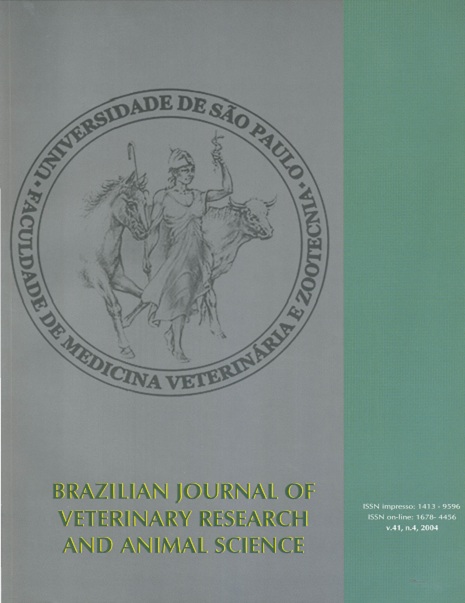Effects of sodium fluoride in gill epithelium of Guppy fish (Poecilia vivipara)
DOI:
https://doi.org/10.1590/S1413-95962004000400009Keywords:
Chloride cells, Fluorine, Gills, Mucous cells, SchistosomiasisAbstract
Fluorine is an element much used by man and easily found in nature. Some studies have been carried out on the toxicity of fluorine and its cumulative effect on animal tissues. Sodium fluoride is described as being used in controlling the host of schistosomiasis (Biomphalaria glabrata). With a view to preserve the aquatic environment, it is proposed to verify the effect of sodium fluoride on fish (Poecilia vivipara). Ten fishes were divided into two groups. The first group was exposed to freshwater with sodium fluoride with a concentration of 5 ppm for a period of 21 days; the second group was exposed to freshwater. After 21 days the animals were sacrificed and their gills removed and processed according to histochemical/histologic methods and ultrastructural study. The gill leaflets were diaphanized in xylol. Histologic analyses using hematoxyline-eosin identified branchial epithelium and revealed mucous and chloride cells. The histochemical methods to detect glycoconjugate contents of mucous cells used: P.A.S, P.A.S. + salivar amylase; P.A.S. + acetylation ; P.A.S. + reversible acetylation; Alcian blue pH 2.5; Alcian blue pH 0.5; Alcian blue pH 2.5 + methylation; and Alcian blue pH 2.5 + reversible methylation. An increase in secretion of mucus and an alteration to the content of the granules were also observed, suggesting behavior changes of mucous type to enable these animals to adapt to the environment, thus altering the concentration of sodium fluoride.Downloads
Download data is not yet available.
Downloads
Published
2004-08-01
Issue
Section
UNDEFINIED
License
The journal content is authorized under the Creative Commons BY-NC-SA license (summary of the license: https://
How to Cite
1.
Breseghelo L, Cardoso MP, Borges-de-Oliveira R, Costa MF da, Barreto JCB, Sabóia-Morais SMT de, et al. Effects of sodium fluoride in gill epithelium of Guppy fish (Poecilia vivipara). Braz. J. Vet. Res. Anim. Sci. [Internet]. 2004 Aug. 1 [cited 2024 Apr. 18];41(4):274-80. Available from: https://revistas.usp.br/bjvras/article/view/6288





